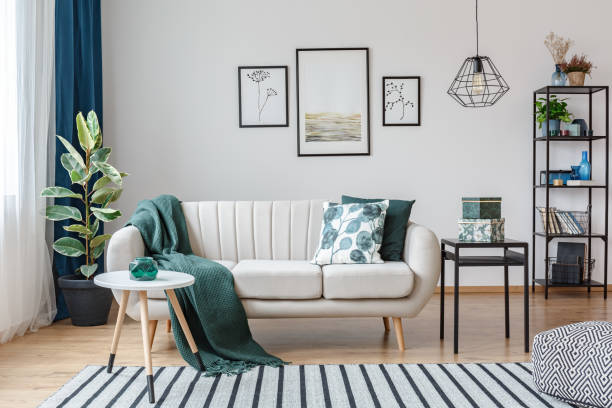In the captivating world of interior design, lighting emerges as a silent maestro, orchestrating the mood, functionality, and aesthetic appeal of a space. This article delves into the intricate balance of “Enlightened Spaces,” exploring the art and science of lighting interior design, where every fixture is a brushstroke, and every beam of light is a stroke of genius.
Section 1: The Dance of Illumination
Lighting in interior design is a choreography of illumination, where each fixture and source plays a vital role in creating a harmonious dance of light. From the gentle glow of ambient lighting to the spotlight effect of task lighting, this choreography defines the visual narrative of a room, establishing the rhythm that resonates with its purpose and mood.
Section 2: Layers of Light: Ambient, Task, and Accent
Creating enlightened spaces involves understanding the importance of light layers. Ambient lighting sets the overall tone, task lighting provides focused illumination for specific activities, and accent lighting adds drama and highlights architectural features. Together, these layers form a cohesive composition that transforms a room into a multifaceted and well-lit environment.
Section 3: Fixture Artistry: More Than Light Sources
Light fixtures transcend their functional role and become works of art within interior design. Whether it’s a sculptural pendant, a classic chandelier, or an avant-garde floor lamp, these fixtures add a layer of aesthetic richness to a space. The choice of fixture style, materials, and design contributes to the overall visual language of the room.
Section 4: Natural Light Integration
While artificial lighting is essential, the integration of natural light is a hallmark of thoughtful interior design. Maximizing natural light sources through strategically placed windows, skylights, or glass doors not only enhances energy efficiency but also creates a dynamic interplay between natural and artificial illumination, elevating the overall quality of light in a space.
Section 5: Color Temperature and Mood
Understanding color temperature is a crucial aspect of lighting design. Warm tones create a cozy and inviting atmosphere, while cool tones evoke a sense of modernity and sophistication. The ability to manipulate color temperature allows interior designers to sculpt the mood of a room, tailoring it to the desired emotional response.
Section 6: Smart Lighting Technology
In the era of smart homes, lighting has embraced technological advancements. Smart lighting technology allows for customizable control over color, intensity, and even the ability to create dynamic lighting scenes. Integration with smart home systems enhances convenience and adds a layer of futuristic sophistication to enlightened spaces.
Section 7: Artistic Shadows and Highlights
Beyond direct illumination, lighting in interior design creates artistic interplays of shadows and highlights. Strategically placed fixtures can accentuate textures, highlight architectural details, and add depth to surfaces. The artistry of shadows becomes an integral part of the visual storytelling, enhancing the overall sophistication of a well-designed space.
Conclusion:
“Enlightened Spaces” in interior design embody the marriage of artistic expression and scientific precision. From the dance of illumination and layers of light to fixture artistry, natural light integration, color temperature manipulation, smart technology, and the artistic interplay of shadows and highlights—every aspect contributes to the creation of spaces that are not just well-lit but also enlightened by thoughtful design. As you embark on your interior design journey, let lighting be the brush that paints your spaces with brilliance, turning them into illuminated canvases of style and functionality.











